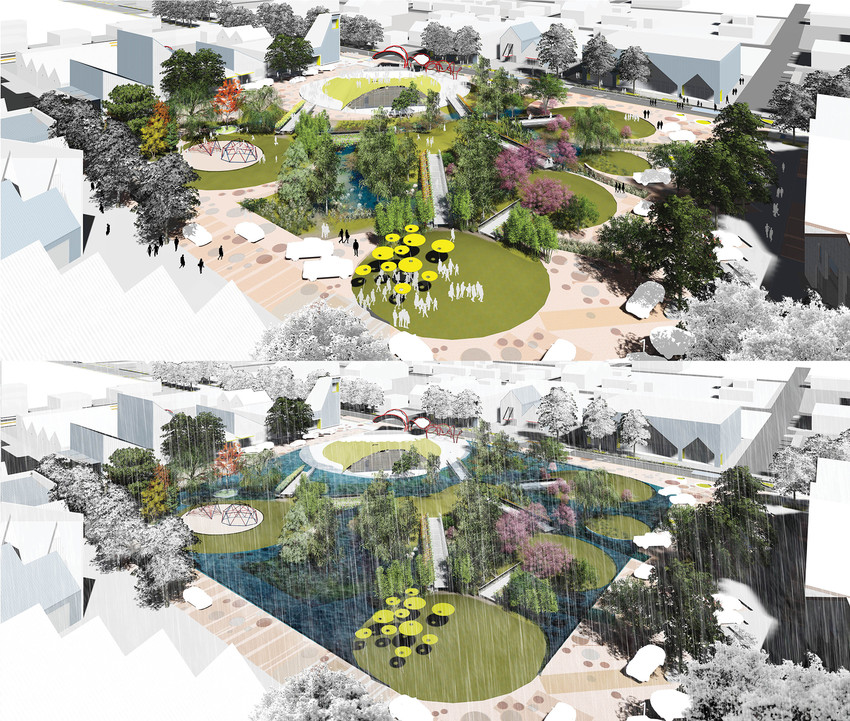
FAYETTEVILLE, Ark. – A $50,000 grant from the National Endowment for the Arts will allow the University of Arkansas Community Design Center to assist the city of Conway in developing a plan for a town square that integrates wetland-based storm water treatment landscapes with urban land uses and an outdoor performance space.
The Art Works grant will support a project called “Water and Wildness: Reimagining the Town Square as a Rain Terrain.” The Community Design Center will work with Conway and the Ecological Design Group on a proposal to transform a flood-prone scrapyard at the intersection of two redeveloping urban neighborhoods into an ecological version of an art park.
Rain terrains are a new concept for “wet” areas like Conway, a city that receives 51 inches of rainfall a year (30 percent above the national average). Designed to hold water rather than allow drainage, a rain terrain works as a sponge, combining ecological engineering with landscape architecture and hydrology to maximize water absorption and minimize runoff.
“The idea is to use soft engineering to manage the water, which is much cheaper than building new infrastructure, and also gives you a really great landscape,” said Steve Luoni, director of the Community Design Center and a Distinguished Professor in the Fay Jones School of Architecture and Design. “This will allow new investments to come into the neighborhood.”
The Community Design Center is an outreach program of the Fay Jones School.
The Markham Square design proposed for Conway will be surrounded by a green infrastructure of streets and auto parking, featuring low-impact development treatment landscapes, Luoni said.
The landscape design for the square features living walls, wire mesh container gardens and footbridges, rookeries as landmarks, espaliers, and sculptural butterfly gardens that call attention to landscape systems. Water-loving trees such as poplars and willows absorb water through their root systems.
“The idea is an urban park that also delivers ecological services,” Luoni said.
The town square design is part of the larger Urban Watershed Framework Plan for Conway, a holistic planning approach to watershed management designed to remove Lake Conway and surrounding streams from the U.S. Environmental Protection Agency Impaired Waterbodies List. A three-year, nearly $500,000 EPA grant – administered by the Arkansas Natural Resources Commission – has helped fund the planning project.
The NEA grant will allow the town square portion of the project to move into the design development phase. Other partners in the proposed Markham Square design include the Pine Street Area Community Development Corp. and the Lake Conway-Point Remove Watershed Alliance.
This NEA grant is one of 970 Art Works grants totaling nearly $26 million to organizations in 48 states, the District of Columbia and the U.S. Virgin islands.
Art Works is the NEA’s largest funding category and focuses on the creation of art that meets the highest standards of excellence, public engagement with diverse and excellent art, lifelong learning in the arts, and the strengthening of communities through the arts.
Topics
Contacts
Steve Luoni, director
U of A Community Design Center
479-575-5772, sluoni@uark.edu
Michelle Parks, senior director of marketing and communications
Fay Jones School of Architecture and Design
479-575-4704,
mparks17@uark.edu